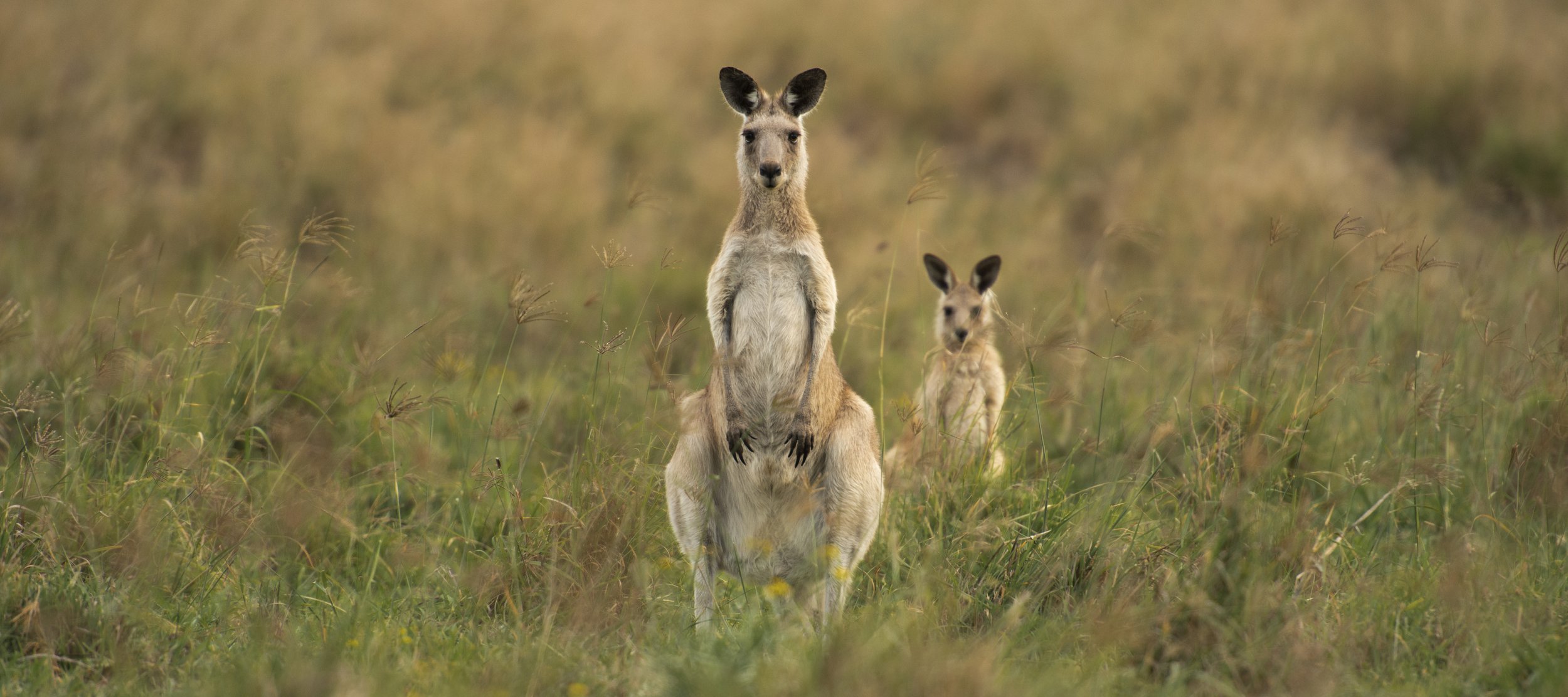
Kangaroo killing
The mass commercial slaughter of one of Australia’s most iconic native animals.
Kangaroos are arguably the most globally recognised native Australian animal. Living on this land for 20 million years, the kangaroos' ecological role is to promote the regeneration of native plants and help reduce fuel loads in forests and grasslands. Sadly, these iconic animals are under fire. Kangaroos are killed in the thousands each night under a veil of darkness to satisfy an unnecessary and declining sports leather and pet food industry.
Australia’s killing of kangaroos is the largest land-based slaughter of mammalian wildlife in the world, responsible for killing ten times the number of harp seals during the infamous annual Canadian seal hunt.
Recently, there has been a change of appetite for kangaroo skin globally, as the cruel underbelly of this industry reaches the EU, and corporates are beginning to turn their backs on the wildlife trade. Further, there is currently a bill proposed to ban the importation of kangaroo skin and body parts in the US.
A recent Parliamentary Inquiry into kangaroo shooting in NSW made some damning findings and recommendations, urging the industry to clean up its act. Australia’s slaughter of kangaroos has a long and controversial history. Consequently, it is one of the only Australian industries obligated to spend “the bulk of its promotional budget to simply defend what it does” (Kelly, 2003).
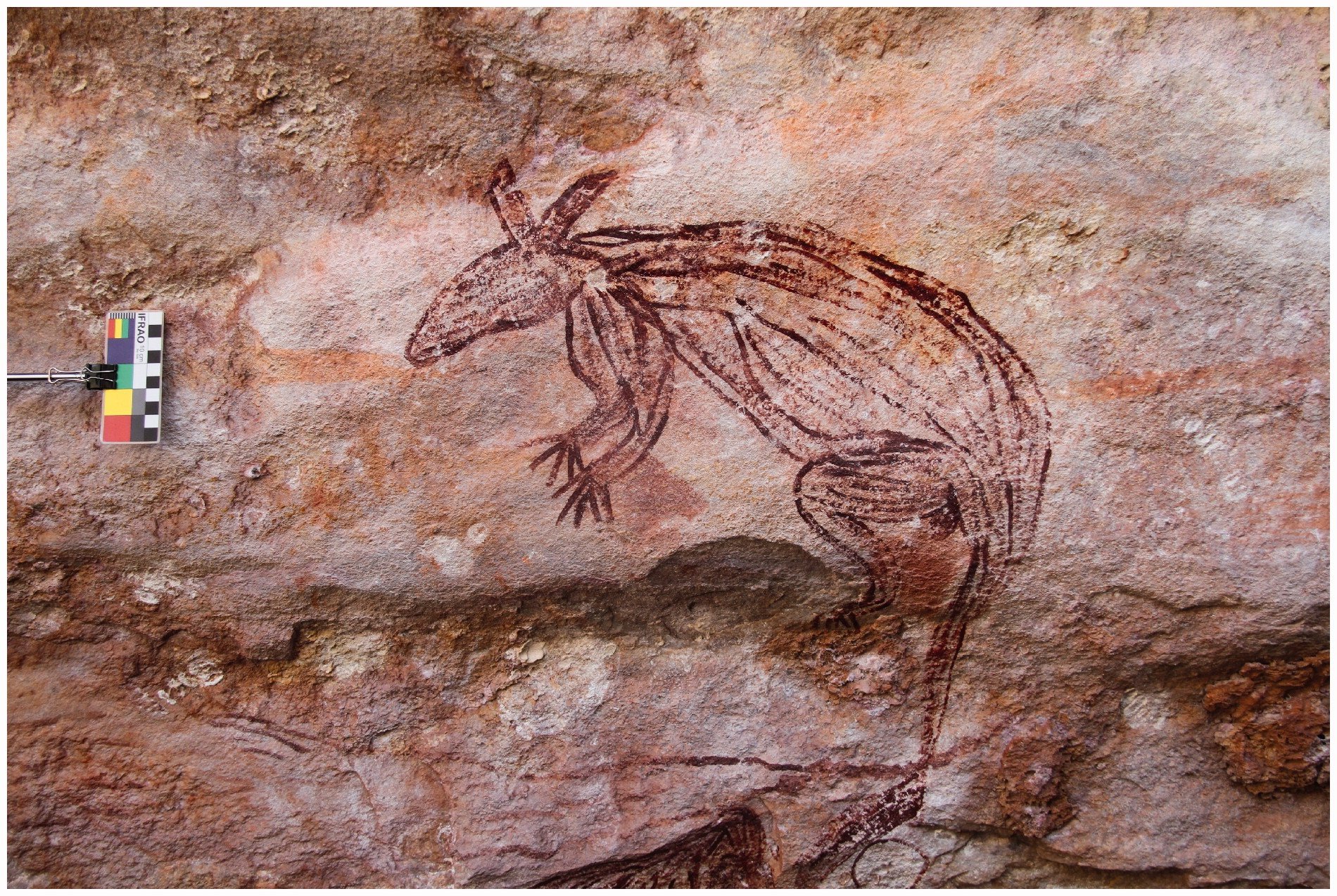
Kangaroos and Indigenous Culture
Kangaroos hold deep cultural, social and spiritual significance to many First Nations people. They are teachers, a food source, and are also part of ceremony. Unfortunately, the commercial kangaroo slaughter industry largely disregards and excludes the concerns of First Nations people and the cultural significance these native animals hold.
Kangaroos are a Totemic Species to many First Nations people. In Indigenous teachings, a Totem is a plant, animal, or other object that is inherited by members of a Clan, Mob, or Family as their spiritual emblem. These Totems are ancestors, and the link to story & knowledge, and responsibility for that Totem means restrictions upon hunting or using the animal as such.
Social, slow growing and reproducing animals
There are various species of kangaroo in Australia, all of which have distinctive colouring and size. There are 45 living species of kangaroos and wallabies. Kangaroos are social animals, living within large family groups known as ‘mobs’. They reside within a matriarchal society, in which females remain with their bloodlines for life. Often thought to be nomadic creatures, kangaroos actually tend to remain in a specific area that is home to their mob.
Kangaroos are a maternal species, as joeys live and grow in their mothers pouches for up to 11 months after birth. The joeys then feed from their mother for as long as 18 months and remain with her for a significant amount of time after leaving her pouch, too.
A kangaroo doe can raise just one joey to full independence per year, and in intense times of drought juvenile mortality can be up to 100%. This is due to the mother doe facing starvation and malnourishment, causing a halt to her reproductive system and in turn resulting in her dependent young to die from starvation. During these times kangaroo populations are known to decline by as much as 65%.
In a doe’s (female kangaroo) fertile life - roughly 8 years - she might have only two joeys survive beyond weaning age, but only under optimal conditions.
In competition for viable food sources and habitat
A common justification for the killing of kangaroos is their claimed competition for available resources with farmed animals, and the alleged damage they cause to infrastructure, such as agricultural fencing.
Kangaroos will remain in competition with farmed animals for available resources as long as they continue to lose viable habitat to relentless land clearing - particularly for animal agriculture - and as a result continue to be encroached upon by humans and human activity.
The kangaroo and the dingo
The kangaroo co-existed with dingoes prior to European occupation. Dingoes are the only natural predator to native kangaroos, acting to help keep their populations in balance within the ecosystem. The Australian government has long demonised kangaroos and dingoes, controlling them either through hunting, trapping, shooting, poisoning or harvesting methods.
It is worth further consideration as to why our governments choose to so ferociously remove the only natural predator to kangaroos in the ecosystem. If population numbers of kangaroos were of genuine concern, and hunting was not just to satisfy the kangaroo leather and meat trade, then it should be in the interest of this country’s legislators to prioritise the restoration of the kangaroo and dingo relationship.
Like many other native animals, in optimal conditions kangaroo populations simply would not be able to grow continuously forever, but rather reach a point of equilibrium and stability. What’s more, kangaroos have lived on this land for 20 million years. Indigenous to their land, they have every right to be here.
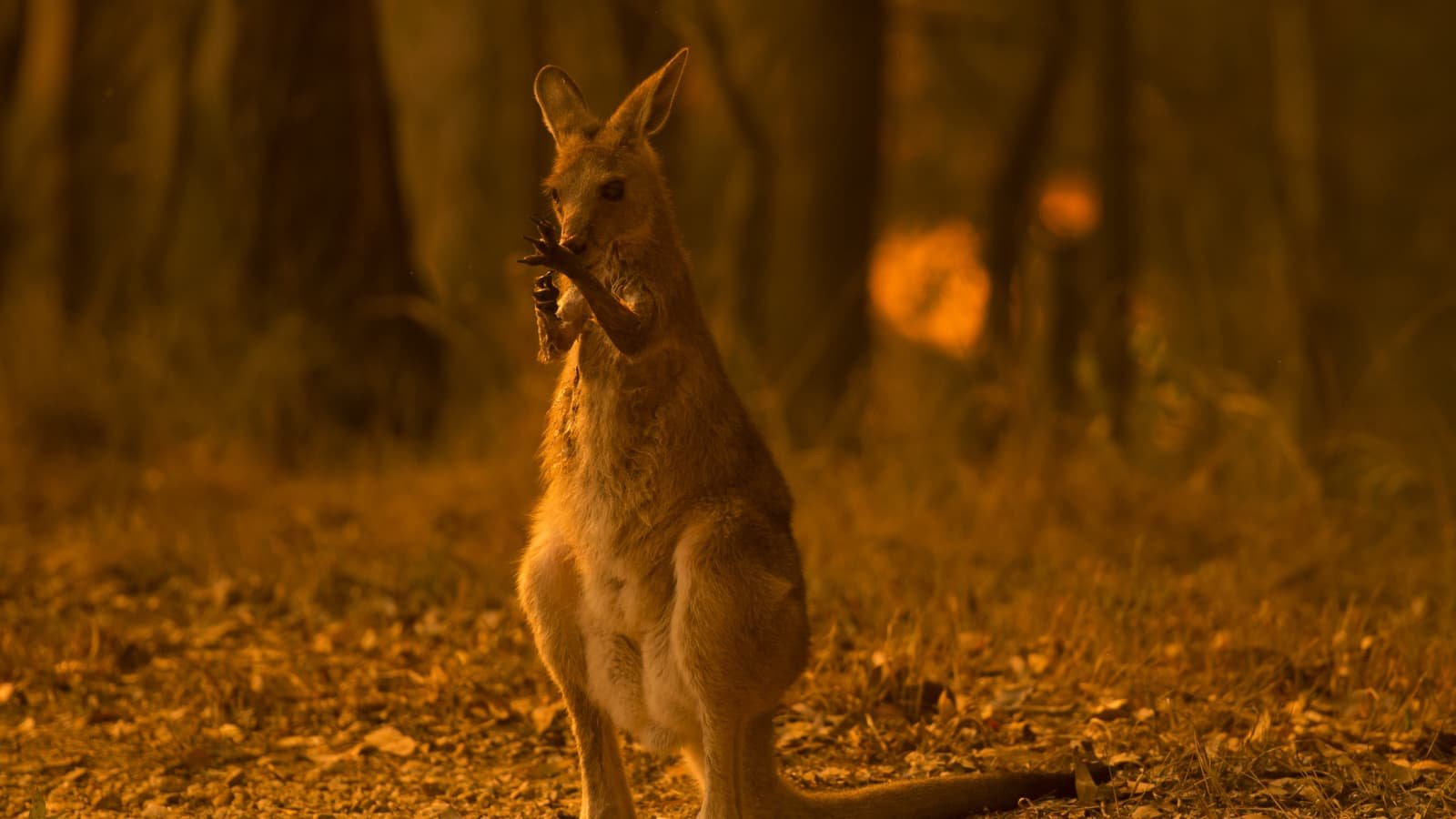
Inaccurate measures to determine killing quotas
Kangaroo kill limits, deceptively referred to as ‘sustainable harvest quotas’, are set annually based on kangaroo population estimates. These limits outline the number of kangaroos the industry can slaughter each year, which is claimed to be 10%-15% of the targeted species population.
Scientists have questioned the accuracy of methods used to estimate population numbers, calling into question the legitimacy of the entire system.
Inaccurate, invisible, inhumane
While a national code for the killing of kangaroos and other macropods exists on a commercial and non-commercial basis, they allow inhumane practices.
Though the code requires shooters to aim for a single shot to kangaroos’ heads, in order to achieve instantaneous loss of consciousness, there are a number of factors that affect shooter accuracy. These include impaired vision due to darkness or distance, weather conditions, the small size of the kangaroo’s head, unexpected movement by startled kangaroos, and the skill or experience of the shooter.
Unsurprisingly, non-fatal shots are unavoidable and are an inherent part of the industry. Non-fatal shots cause prolonged suffering and pain for kangaroos who are “mis-shot”. In such a poorly regulated industry, it is impossible to determine just how many kangaroos are mis-shot annually, however a study conducted in 2009 found that as many as 40% of kangaroo carcasses assessed in chillers were improperly shot. New data shows a 55% increase in gunshot wounds since the introduction of the Kangaroo Harvesting Program in 2019. Even if the figure of 95.9% of kangaroos killed by a shot to the head is accurate, it is estimated that thousands of kangaroos are not and suffer significantly prior to their death.
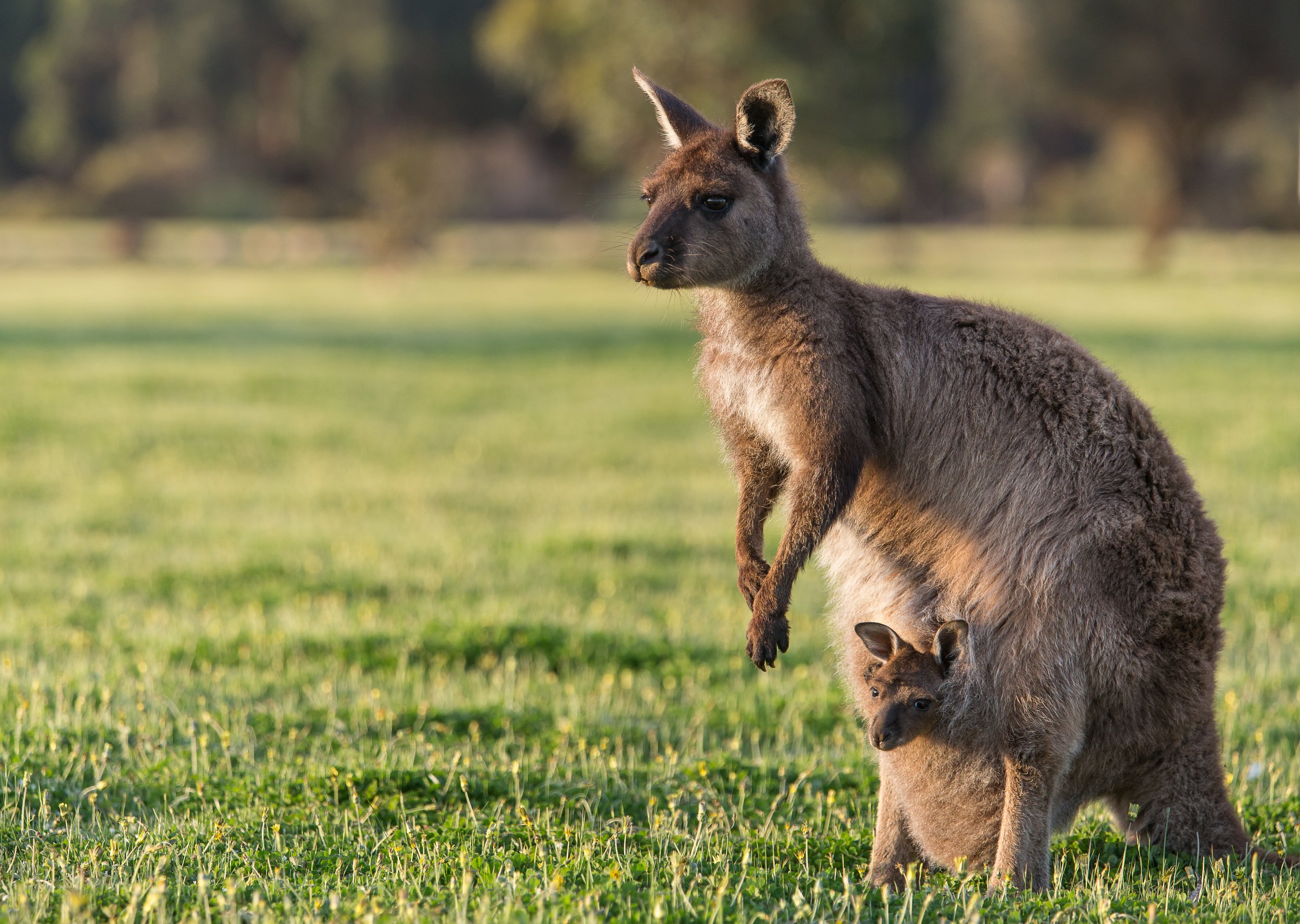
Killing of joeys
There is no ‘law’ to prevent female kangaroos from being shot and killed, and sadly mothers are often shot while they have dependent joeys relying on them. When females with joeys are killed, it is recommended that any dependent joeys also be killed.
Depending on the age and size of the joey they can be killed by decapitation (referred to as “cervical dislocation”), a heavy blow to the head (with objects such as rocks or metal poles), or a shot to their head or chest. Despite government recommendations, some joeys manage to escape this fate and face life without the protection their mother provides. This leaves them extremely vulnerable to predation, starvation and exposure. It’s estimated that as many as 440,000 dependent joeys are brutally killed or left to starve by shooters each year.
A report released by Agrifutures, a statutory organisation set up by the Federal Government, highlighted an overwhelming lack of skills among shooters to undertake euthanising at foot joeys after they have shot their mothers. The report stated:
“Despite harvesters having a positive attitude towards euthanasing young-at-foot and believing that they have volitional control over performing it, based on our limited observational data, there appears to be a discrepancy between the intention to euthanase young-at-foot and carrying out this behaviour. Harvesters report a strong intention to euthanase young-at-foot, but this happens only rarely. There could be two potential reasons. Firstly, their intentions may actually change (i.e. they can euthanase young-at-foot, but for some reason they don’t) or secondly, they may be unrealistic in their judgement of how difficult it can be (i.e. they intend to, but are prevented from doing so by factors beyond their control).”
National codes for the destruction of at foot joeys
The non-commercial killing of kangaroos - license to harm
In addition to the commercial harvesting of kangaroos, landholders in NSW can apply for a ‘license to harm’ kangaroos on their property who are ‘causing economic hardship’. Similar provisions are available for landholders in Victoria. In Tasmania, landholders may also apply for a ‘crop protection permit’ to kill macropods that cause ‘impacts on productivity’. It is also the only Australian jurisdiction where it is legal to deliberately kill macropods with 1080 poison. The non-commercial killing of kangaroos has significantly worse welfare outcomes for kangaroos.
Despite being required to follow the non-commercial code of practice, there is much less incentive for non-commercial shooters to do so as they do not answer to ‘processing facilities’ and most permit systems in Australia rely on self-reporting as regulation. Further, unlike commercial shooters, non-commercial shooters are not required to complete a competency test or any formal training before hunting kangaroos. This leaves the kangaroos at a much greater risk of unimaginable suffering and cruelty. According to RSPCA Australia, there is “a far higher degree of inhumane killing of kangaroos in non-commercial shooting than commercial shooting”. This conclusion is shared by advocates of the industry and is further complicated by the lack of monitoring of kangaroos killed under non-commercial licences.
Other threats to kangaroos
Climate change
The scale and ferocity of the 2019/20 bushfires in Australia were a horrifying reminder of the devastating consequences we will continue to face if we do not address the climate crisis immediately. Disturbingly, an estimated three billion native Australian animals perished in the fires, including five million kangaroos. Officials estimated that “no other event in our lifetimes has had such a sudden and drastic effect” on Australian wildlife.
Image: A young kangaroo who had been burnt by catastrophic fires in Mallacoota, Victoria. Sadly, they needed to be euthanized due to their injuries. Source: We Animals Media
Kangaroos are a precious ally in reducing the devastation of fires in this country. In contrast, the clearing of native land and the rise of grazing animals greatly exacerbate the existing and emerging adverse effects of climate change.
Car collisions
Data shows that as many as 90% of car collisions with animals involve kangaroos. In 2018, NSW had the highest rate of such collisions with 14,500 claims made. Assuming kangaroos made up 90% of this figure, that is a staggering 13,050 kangaroos killed or injured on roads in one year in NSW alone, not including possible pouch young killed or left to die on the side of the road.
Habitat destruction
Kangaroos continue to lose their precious habitat to animal agriculture, clearing land to make way for grazing animals that are used for human consumption. Loss of habitat is a huge threat to all native wildlife, as it removes their shelter and food sources.
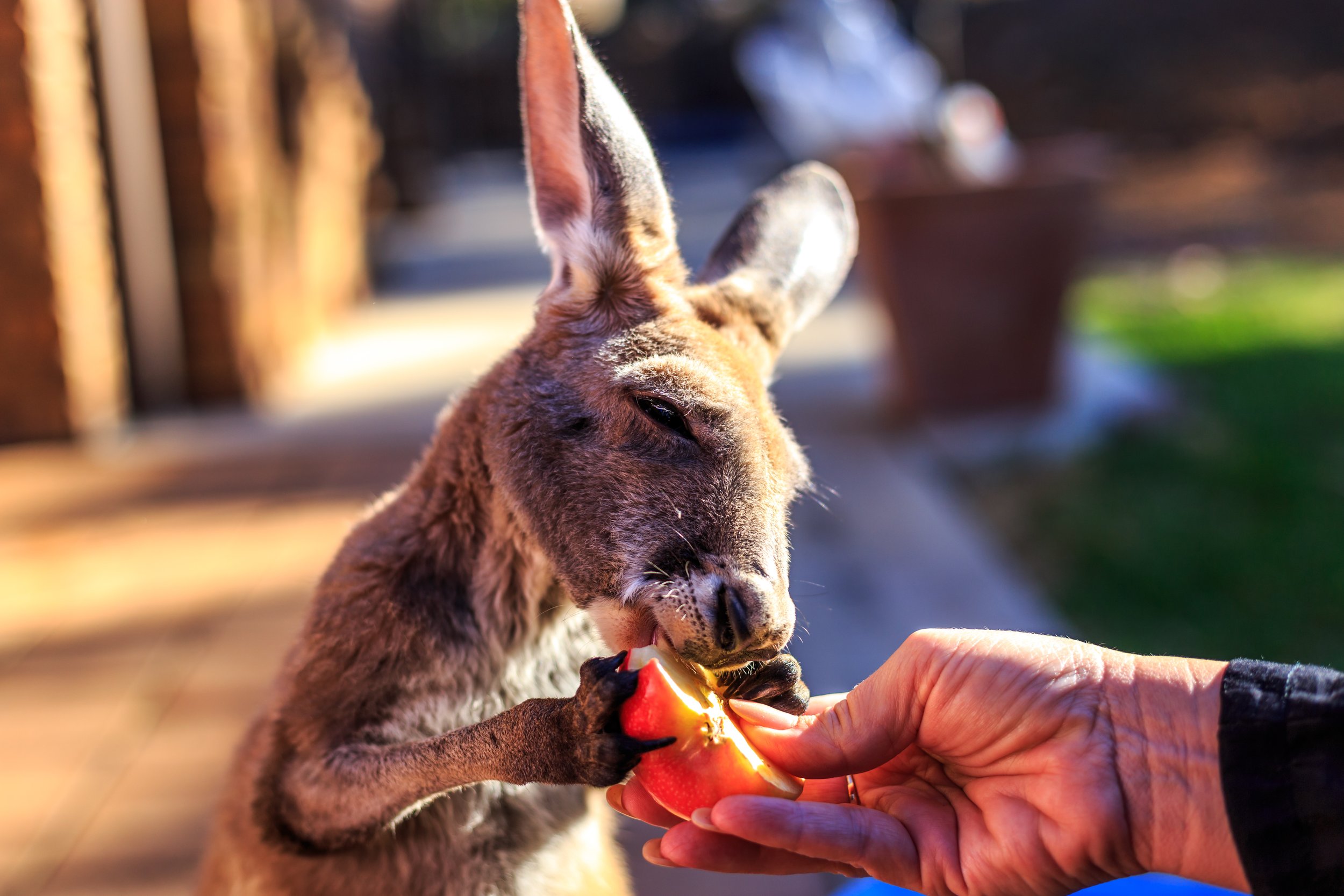
Solutions available
Alternative materials
There are plenty of alternative materials that can be used in place of kangaroo leather. Kangaroo leather is most commonly used for football boots as well as gloves and other small goods because it is thinner and more flexible than the skin of bovine animals.
Several total ethics leather alternative companies including Ananas Anam producing Piñatex derived largely from pineapple leaves, and Desserto producing partly cactus derived material make ‘performance’ specific leather-like materials. These ‘performance’ focused materials sit alongside their more standard fashion materials, and are designed to have more flexibility and movement, making them a perfect alternative. These materials have far lower environmental impacts when considering climate and biodiversity threats.
A just transition out of animal agriculture
The presence of kangaroos on agricultural pastures due to the continued destruction of their habitat is what results in the slaughter of thousands of native kangaroos. The biggest danger facing wildlife in this country is habitat destruction, which is primarily driven by the animal agriculture industry.
Landholders must look towards coexisting with the species native to this country. This might look like subsidising farmers to have portions of their land freed up for kangaroo populations, or reinstating wildlife corridors on their property.
In order to truly protect Australian wildlife and the habitats they rely upon, we must begin a transition away from animal-based farming in favour of an Indigenous led, plant-based system. Such a transition would free up vast areas of land, which could be rewild and returned to nature, providing important habitat for wildlife to flourish.
You can learn more about Defend the Wild’s vision for a kinder, wildlife-friendly future below.
Pledge to become a Wildlife Defender!
Each of us have incredible power to create meaningful change - let’s use it. You can play an important role in the protection of Australia’s unique wildlife. Take the pledge to become a Wildlife Defender today and join a growing community of people defending the wild.














